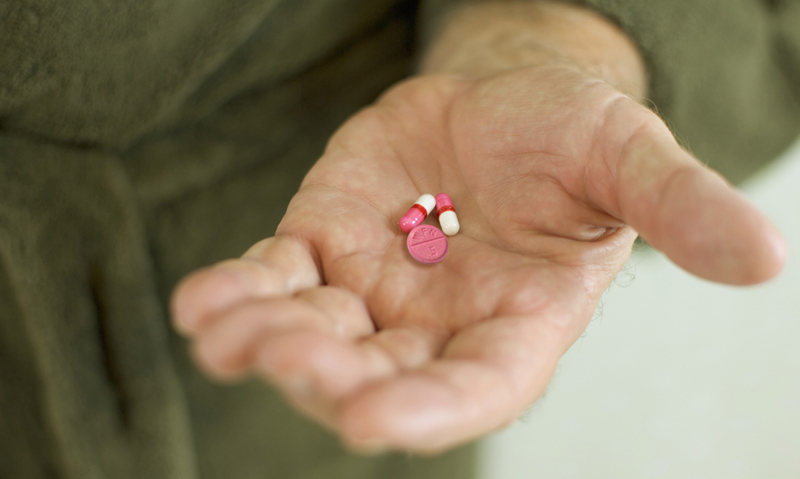EXPERTS have warned doctors to be alert to the potential for reverse drug interactions when one of the interacting medications is discontinued.
Professor Ric Day, professor of clinical pharmacology at the University of NSW, said a case report published in the MJA about a “profound” interaction between warfarin and rifampicin was a timely reminder about all potential drug interactions with warfarin, but particularly when stopping an interacting drug. (1)
“People forget that when you stop an interacting drug that there will be a reverse interaction oftentimes”, he said.
Professor Day said the case report was a pertinent example of one drug inducing the metabolism of another drug.
“In this case, rifampicin was inducing the metabolism of warfarin. When you stop the rifampicin the reverse happens, so it’s a huge effect … and overlooked by everyone involved”, he said.
The report described the case of an 82-year-old man hospitalised after a fall, who was found to have a haemoglobin level of 57 g/L (reference interval [RI] 122–170 g/L), an international normalised ratio (INR) of >20 (RI, 0.9–1.3), a prothrombin time of >200 seconds (RI, 10.6–15.3 s), and an activated partial thromboplastic time of 945.4 s (RI 26–38 s). The patient was diagnosed with an intramuscular haematoma in the right gluteal region.
The patient had been diagnosed with tuberculosis 11 months earlier and prescribed rifampicin, isoniazid, pyrazinamide and ethambutol for 2 months and rifampicin and isoniazid for a further 7 months. He was on chronic warfarin prophylaxis for atrial fibrillation.
After starting on rifampicin, the patient’s daily warfarin dose was increased from 4 mg to 12 mg daily, and this was not reduced when the antimycobacterial regimen was discontinued.
Doctors and pharmacists reviewing the case determined that the extreme supratherapeutic anticoagulation was likely to have resulted from an interaction between the rifampicin and warfarin.
Dr Andrew Boyden, clinical adviser at NPS MedicineWise and a GP, said the case was a “wake-up call” to prescribers to maintain a high awareness of this and the many other drugs than can interact with warfarin.
He said GPs were generally alert to the potential for interactions with warfarin and the importance of monitoring INRs. However, he said there may be lower awareness about less commonly used antibiotics, such as rifampicin, which were generally prescribed in speciality settings and often given as a prolonged course.
“We do have this higher awareness of [potential interactions] when stopping and starting for shorter courses”, he said. However, issues might arise when discontinuing longer courses of antibiotics and an automated alert system in such a situation might be useful in the GP setting, Dr Boyden said.
The report authors noted that automated alerts to drug interactions on GP prescribing software and pharmacy dispensing software flagged potential interactions on the initiation of drug therapy, but not on cessation.
Dr Boyden said the report highlighted the importance of maintaining communication channels when multiple prescribers from different branches of medicine were involved in a patient’s care.
“In an ideal world we have good information flows between the health professional services and the software used in pharmacies, general practice and hospitals but, as shown here, [communication does] break down and that’s why it is important to educate patients and support them to be a repository of information.”
Dr Boyden said NPS MedicineWise had developed medicine lists, including a recently launched Smartphone app, to help patients to keep track of their medications. (2)
NPS MedicineWise had also developed a decision tool to alert doctors to potential warfarin interactions. (3)
Professor Day advised doctors to always look up potential interactions with warfarin.
“There are some good tools around so, if in doubt, look it up”, he said, adding that the Australian medicines handbook and the Therapeutic guidelines were also good sources for checking drug interactions.
The MJA authors noted that novel anticoagulants such as dabigatran may also interact with rifampicin, but there were no laboratory testing methods available to monitor such an interaction.
1. MJA 2014; 200: 345-346
2. NPS MedicineWise: Medicines list
3. NPS MedicineWise: Warfarin drug reactions

 more_vert
more_vert
Yet another good reason to home monitor your INR. It is nearly as easy as a glucometer. The pateint then can take care of their warfarin and adjust dose as required. Why is this valuable POC method not funded for those trained and able to take responsibility for their medication.=?